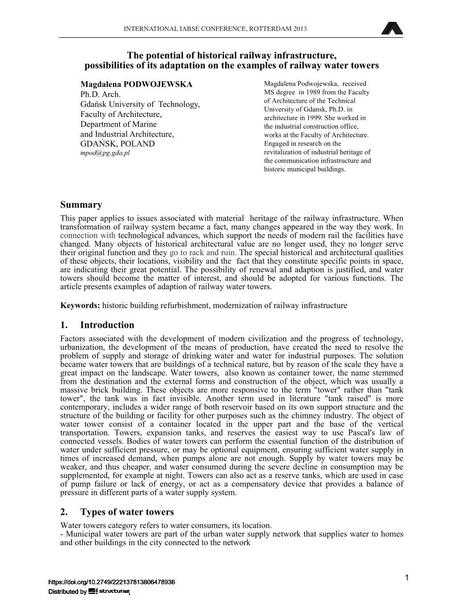The potential of historical railway infrastructure, possibilities of its adaptation on the examples of railway water towers

|
|
|||||||||||
Détails bibliographiques
| Auteur(s): |
Magdalena Podwojewska
|
||||
|---|---|---|---|---|---|
| Médium: | papier de conférence | ||||
| Langue(s): | anglais | ||||
| Conférence: | IABSE Conference: Assessment, Upgrading and Refurbishment of Infrastructures, Rotterdam, The Netherlands, 6-8 May 2013 | ||||
| Publié dans: | IABSE Conference, Rotterdam, May 2013 | ||||
|
|||||
| Page(s): | 260-261 | ||||
| Nombre total de pages (du PDF): | 7 | ||||
| Année: | 2013 | ||||
| DOI: | 10.2749/222137813806478936 | ||||
| Abstrait: |
This paper applies to issues associated with material heritage of the railway infrastructure. When transformation of railway system became a fact, many changes appeared in the way they work. In connection with technological advances, which support the needs of modern rail the facilities have changed. Many objects of historical architectural value are no longer used, they no longer serve their original function and they go to rack and ruin. The special historical and architectural qualities of these objects, their locations, visibility and the fact that they constitute specific points in space, are indicating their great potential. The possibility of renewal and adaption is justified, and water towers should become the matter of interest, and should be adopted for various functions. The article presents examples of adaption of railway water towers. |
||||
